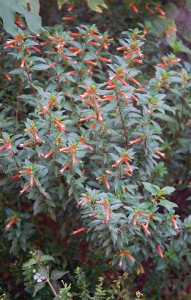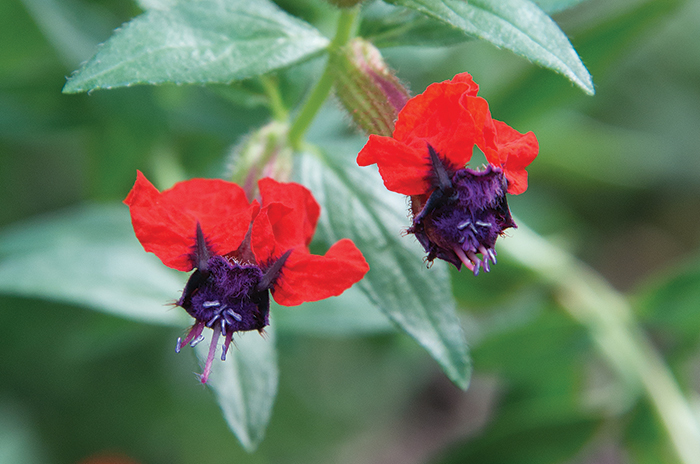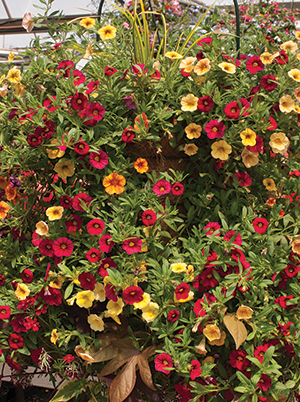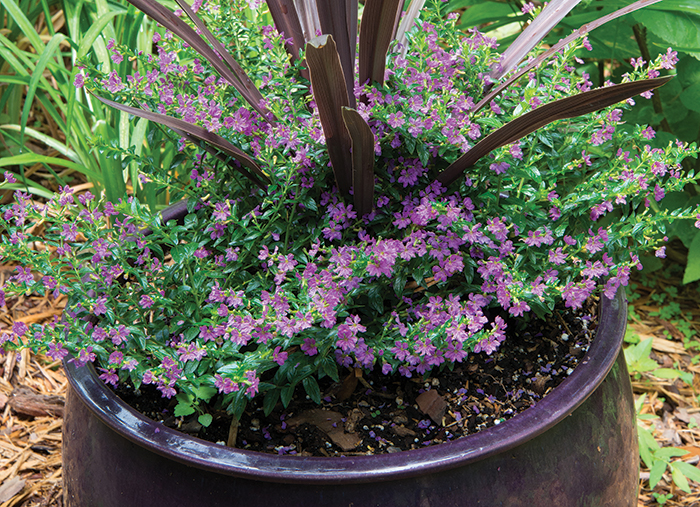In a plant genus, there are often many species, and being closely related, you might think most would exhibit some semblance of similarity in appearance. As sound as this might seem, I can blow that notion out of the water with the genus Cuphea — or what I impetuously sometimes call the Clan Cuphea.
To illustrate my point, within this, er, clan, are three plants often seen in the spring at local garden centers with blooms that have plenty of visual sass to keep the flower border interesting during the growing season, but each does it in their own distinctly, delightfully different way:

Cigar plant
Cigar plant (Cuphea ignea): Also known as the “firecracker plant,” this Mexican native sports waves of slender, 1-inch-long, cylindrical blooms in shades of rich reds or flashy oranges tinged with light yellow accents that resemble miniature glowing cigars — or tiny firecrackers. Beyond such imaginative imagery, these odd flowers are also dependable magnets for butterflies, bees and hummingbirds, which is a standard trait for members of Clan Cuphea.
The cigar plant can grow up to 3 feet tall with a similar spread, and as long as it is watered regularly, performs well in the summer sun. This perennial is only marginally hardy in Cary gardens, and as a result, is often planted as an annual. However the giant cigar plant (Cuphea micropetala), in addition to being larger, is usually hardy enough to weather typical winters in this region.
Mexican heather (Cuphea hyssopifolia): This popular perennial is a handsome plant with broad sweeps of ¾-inch, glossy, lance-shaped leaves forming the backdrop for petite, light purple, trumpet-shaped flowers that seem like they never want to stop blooming in the summer. It can top out at around 2 feet tall and wide.
Mexican heather’s size makes it a prime candidate for understory or potted plantings in sunny locations. One advantage to keeping it in a moveable container is since this Central American native could be killed by a nasty winter, it can be picked up and sheltered during the coldest times. Simply treating it as an annual — it is not that expensive — is, of course, another option.

Bat-faced plant
Bat-faced plant (Cuphea llavea): Straight from Gotham City to your garden comes the bat-faced plant. Its flowers, while rather small, are definitely weird — in a fun way. Close examination will reveal its bizarre blooms, each emerging alien-like from a 1-inch-long tube with two Lucifer-red petals flanking a hairy, purple center that does, indeed, look like a bat’s face — and sticking its tongue out, no less.
Another import from Mexico, this strangely cute plant will normally mature to a rounded shape 18 inches high and wide. Bat-face abides by typical Clan Cuphea culture, meaning lots of sun and regular watering will keep it happy. It, too, is a tender perennial, so enjoy it as an annual or make plans for a comfortable “bat cave” this winter.

Million Bells
Annuals such as zinnias, salvias, million bells, marigolds and petunias can become long, lanky and lazy in the flower power department, but pinching the plants back when they are about 8 inches high will create branching, which leads to bushier growth and more blossoms.
It is easy to do — just use your thumb and forefinger to squeeze the end tip off of each limb.
Pampering these pretties with a diluted solution of low-nitrogen fertilizer once a month will also encourage a better parade of blooms through the summer.
To Do in the Garden
May
- After the foliage has faded on naturalized spring-flowering bulbs such as crocus, daffodil, snowdrops, grape hyacinth and Spanish bluebell, dig up and divide any clumps that have become overcrowded. How will you know they have become overcrowded? The most obvious sign is a noticeable drop in flower production.
- It is warm enough now to round out the vegetable garden with plantings of such heat-seekers as Southern peas, okra, eggplant, hot and sweet peppers, lima beans and sweet potatoes.
- Want fresh, backyard fruit that doesn’t require thinning or constant spraying? Try your green thumb at growing blueberry bushes, which can also be attractive ornamental additions to almost any landscape.
- Strawberries keep best if they are harvested early in the day. To help extend storage life, don’t wash or de-stem the berries until you are ready to eat them.
- Tough plants for tough places such as parched, open areas and sun-baked hillsides include creeping juniper, ajuga and moss pink.
- By the end of this month, the soil should be warm enough in annual vegetable and flower beds to allow the addition of a 3-inch layer of organic mulch to protect root zones from the baking heat of the summer and conserve ground moisture.
- This month’s balmy temperatures signal it is time to bring houseplants outdoors for a summer vacation. Just be sure to locate them in areas that receive filtered shade most of the day to prevent sunscald.
- Tough Cookies
- Family Style
- The Soft Skills of Therapy Dogs
- For Entrepreneurs, Help is Crucial
- Yes Solar Solutions: A Reputation for Quality
- Chatham Station: The New Venue in Town
- The Clan Cuphea
- Smart Arts
- Call the Hops by Fortnight Brewing Company
- Pet Parade
- Doc Porter’s Bourbon Whiskey
- Transitions LifeCare
- Pick, Bake and Eat Spring’s Bounty of Berries







